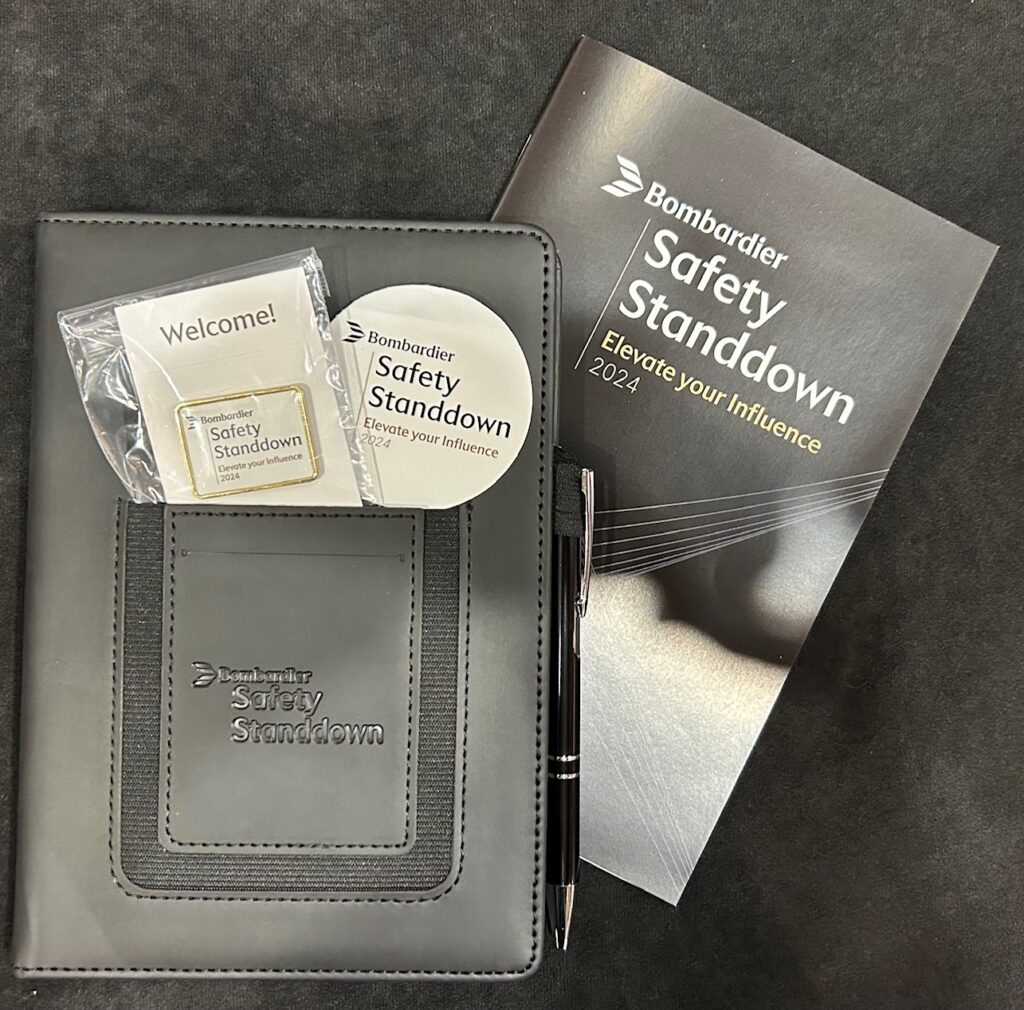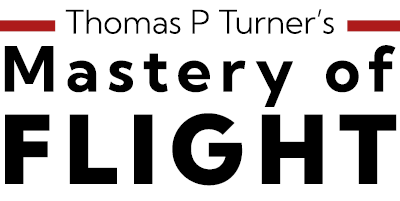Topics this week include:
> Kern-als of knowledge
> Where there’s smoke (smell)…
> IFR departures
Download this week’s report in a pdf

FLYING LESSONS uses recent mishap reports to consider what might have contributed to accidents, so you can make better decisions if you face similar circumstances. In most cases design characteristics of a specific airplane have little direct bearing on the possible causes of aircraft accidents—but knowing how your airplane’s systems respond can make the difference in your success as the scenario unfolds. So apply these FLYING LESSONS to the specific airplane you fly. Verify all technical information before applying it to your aircraft or operation, with manufacturers’ data and recommendations taking precedence. You are pilot in command and are ultimately responsible for the decisions you make.
FLYING LESSONS is an independent product of MASTERY FLIGHT TRAINING, INC.
Pursue Mastery of Flight™
This week’s LESSONS:
Last week I attended the Bombardier Safety Standdown, an annual gathering of aviation safety experts, pilots, mechanics and others primarily in business and corporate aviation. I always get great inspiration from the presentations. This week I’ll share some of what I learned with you.

Dr. Tony Kern is the spiritual guide of the “BSS.” A past US Air Force B-1 Lancer pilot and military accident investigator, Tony has literally written the book (several, actually) on cockpit professionalism and discipline, along with business leadership and motivational books that take the LESSONS he’s learned across many nonaviation disciplines.
Dr. Kern (who also edited one of my books around the turn of the century) was the only one in the room of over 600 participants who has attended all 28 Bombardier Safety Standdowns…and he was the keynote speaker at each. So when Tony talks you listen. He often uses sports analogies and metaphors to teach aeronautical subjects, and this year’s BSS kickoff presentation highlighting what Dr. Kern calls hypervigilance was titled from a quote in a sportcaster’s account of an amazing college softball game, “Somebody Call Sports Central.” Here are a few Kern-als of knowledge from this year’s address:
“Readiness can only be determined after the challenge arises.”
“The things we need to be ready for are in addition to the things we regularly train for.”
“Even if you are experienced, safe and compliant, the rest of the world is not.”
“The habit of hypervigilance should be the norm—be normally alert for abnormal dangers or threats.”
“Non-experts seek the status quo. Experts see a different world.”
“When we influence others we become better prepared.”
“Hypervigilance is a required competency in the cockpit.”
These short quotes are, of course, just the highlights of Dr. Kern’s great presentation. I’ll watch the Standdown website and let you know when this year’s programs are posted.
Meanwhile I invite FLYING LESSONS readers to choose one—or more—of the quotes above and write your reaction for an upcoming Debrief.
Questions? Comments? Supportable opinions? Let us know at [email protected].

Debrief
Readers write about recent FLYING LESSONS
An anonymous reader writes about last’s week’s LESSONS from a different BSS presentation:
Dear Mr. Turner,
Thank you for sharing the Van Splunder script. Please do not mention my name, I’m just sharing how this helped me.
#1 – Put in the emergency code is a brilliant idea
#2 – Phillips Petroleum Company had safety programs each month (to lower insurance rates, improve production, and reduce liability, etc.)
I was in field sales with a company car and stayed in hotels most of each week. One training that was taught in many different ways was surviving a hotel fire. You wouldn’t think 4-star hotels had fires, but they did. One of the most important tips/tricks was to run my hand along the wall from my room to the fire exit (during a fire, on hands and knees ) to know how many doors I had to pass to get to the exit and ensure the fire exit door was unlocked.
This became a life-long habit. His talk of knowing how to get out of the plane, any plane, made me realize that “safety first” isn’t just a slogan, it is a way of life. Again, thank you.
A great LESSON from you, anonymous reader. Thank you too.
Frequent Debriefer John Scherer adds:
I remember one strong smell in the cockpit of the T-37 I was flying on takeoff leg. The smell of electrical smoke was unmistakable. I looked down at the instruments and there was white smoke coming out of the turn and bank indicator. I immediately called for a left closed pattern on Runway 17L at Reese AFB (now closed). We pulled up to downwind. Made sure we were on 100% oxygen (we always wore helmets and oxygen masks). Landing was normal. Pulled off runway. Fire department opened the left nose compartment and the battery was the cause of the smoke. That airplane was done for the day.
That was 1977 and it is still fresh in my mind. Electrical smoke is not what one wants to smell in an airplane. Fortunately, we were on initial takeoff leg and a quick closed pattern put us on the ground in a matter of two to three minutes.
Thanks for a positive example of how it should be done, John.
And from reader Elliot Crawford:
Speaking of smoke in the cockpit, many years ago, before marijuana became legal in Colorado, there was a tradition of gathering for a ‘smoke in’ on April 20th (4/20). Don’t ask me how the tradition started! At 4:20pm on 4/20 a large crowd had gathered on the CU campus in Boulder to celebrate this tradition. It had become quite a big deal and banners were flown over the crowd. I never did see what the banner I was towing said as it was fluttering in my wake. Right at 4:20pm a great cloud of smoke rose up from the assembled throng. Two minutes later, I could smell it in the aircraft. I did not expect that. Of course, I did not inhale!
Keep up the good work, Tom! I find myself recommending your weekly posting to my applicants and students frequently.
Interesting experience, Elliot. It’s extremely gratifying that you are recommending my work to your students. Thank you.
Reader Stephen Weintraub takes us back further to the October 31 LESSONS about the hazards of persons on an active ramp and particularly the actions and positions of aircraft marshallers:
Every time I am marshaled in to park my plane I think that I would not want to be the lineman doing the marshaling, standing in front of a spinning prop. But the solution is not so simple, as it requires a cultural change. The airlines are accustomed to park their plane at a gate with a marshal standing off to the side. But it is universally the case that for small aircraft, the directions to park planes are provided by the marshal indicating that the pilots should line up their aircraft directly in front of him. If a marshal were to move to the side I would interpret that as him deciding that I should move to the side to line up with his new position on the ramp. And having the pilot line up directly in front of the marshal and having the marshal move to the side at the last minute is not a solution either, as that is also not a safe practice. So expectations have to change, and there needs to be a way of communicating the new expectations.
I agree, Steve. I think it starts by emphasizing the existing guidance on aircraft marshalling to guide expectations and enhance safety. Thank you.
More to say? Let us learn from you, at [email protected]

Welcome aboard to the many new subscribers this week who are among over 1400 persons who viewed my webinar live: “IFR Departures: From Planning to the Enroute Environment.” This presentation is part of the Experimental Aircraft Association (EAA) webinar series and a video of the program is available here. Thanks everyone who watched or will watch. I’ll respond to some of the questions I’ve received since the broadcast, which address different or deeper aspects of what was discussed Wednesday night, in future Mastery of Flight(TM) editions.
Safe travels to everyone observing the U.S.’ Thanksgiving holiday next week who will employ personal aviation to reach your family gathering or holiday destination and home again. You’ll notice several years I’ve written lengthy LESSONS learned on Thanksgiving weekend trips. It’s a challenging time of the year to fly and the scheduling pressure can be immense. Use what you’ve learned here and elsewhere and make good decisions. Happy Thanksgiving to all, wherever you live and fly!
Share safer skies. Forward FLYING LESSONS to a friend.
Please help cover the ongoing costs of providing FLYING LESSONS through this secure PayPal donations link. Or send a check made out to Mastery Flight Training, Inc. at 247 Tiffany Street, Rose Hill, Kansas USA 67133. Thank you, generous supporters.
Thank you to our regular monthly financial contributors:
Steven Bernstein, Montclair, NJ. Robert Carhart, Jr., Odentown, MD. Randy Carmichael, Kissimmee, FL. Greg Cohen, Gaithersburg, MD. John Collins, Martinsburg, WV. Dan Drew. Rob Finfrock, Rio Rancho, NM. Norman Gallagher. Bill Griffith, Indianapolis, IN. Steven Hefner, Corinth, MS; Ellen Herr, Ft Myers, FL. Erik Hoel, Redlands, CA. Ron Horton. David Karalunas, Anchorage, AK. Steve Kelly, Appleton, WI. Karl Kleiderer. Greg Long, Johnston, IA. Rick Lugash, Los Angeles, CA. Richard McCraw, Hinesburg, VT. David Ovad, Resiertown, MD. Steven Oxholm, Portsmouth, NH. Brian Schiff, Keller, TX. Paul Sergeant, Allen, TX. Paul Uhlig, Wichita, KS. Richard Whitney, Warrenton, VA. Jim Preston, Alexandria, VA. Johannes Ascherl, Munich, Germany. Bruce Dickerson, Asheville, NC. Edmund Braly, Norman, OK. Steven Hefner. Lorne Sheren, New Vernon, NJ. “The Proficient Pilot,” Keller, TX. Ed Stack, Prospect Heights, IL. Kynan Sturgiss, Hereford, TX
And thanks to these donors in 2024:
Jim Lara, Joseph Stadelmann, Dixon Smith, Barry Warner, Wayne Mudge, Joseph Vandenbosch, Ian Campbell, Jay Apt, John Kimmons, Derek Rowan, Michael Maya Charles, Ron Horton, Lauren McGavran, Gerald Magnoni, Amy Haig, Rod Partlo, Brent Chidsey, Mard Sasaki-Scanlon, SABRIS Aviation (Dave Dewhirst), Edmund Braly, Joseph Orlando, Charles Lloyd, Michael Morrow, Abigail Dang, Thomas Jaszewski Danny Kao, Gary Garavaglia, Brian Larky, Glenn Yeldezian, David Yost, Charles Waldrop, Robert Lough. Gilbert Buettner. Panatech (Henry Fiorientini). Dale Bleakney. Mark Kolesar. John Winter. Donald Bowles. David Peterson. Bill Abbatt. Bruce Jacobsen. Denny Southard. Wayne Cloburn. Ross Ditlove. “Bonanza User,” Tad Santino, Steven Scharff, Kim Caldwell
NEW THIS WEEK: Tom Carr, Michael Smith
Pursue Mastery of Flight(TM)
Thomas P. Turner, M.S. Aviation Safety
Flight Instructor Hall of Fame Inductee
2021 Jack Eggspuehler Service Award winner
2010 National FAA Safety Team Representative of the Year
2008 FAA Central Region CFI of the Year
FLYING LESSONS is ©2024 Mastery Flight Training, Inc. For more information see www.thomaspturner.com. For reprint permission or other questions contact [email protected].

